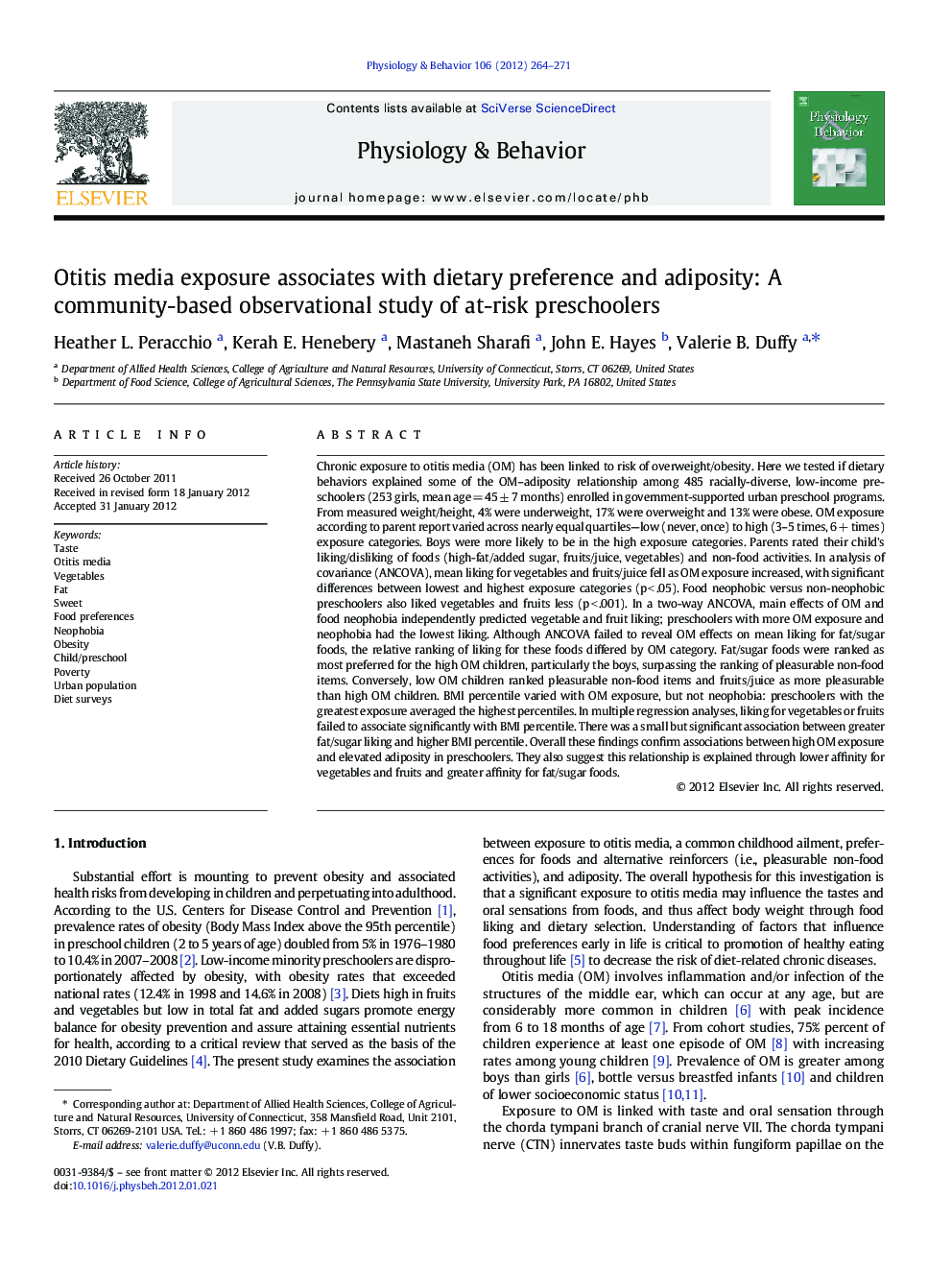| کد مقاله | کد نشریه | سال انتشار | مقاله انگلیسی | نسخه تمام متن |
|---|---|---|---|---|
| 5925134 | 1166342 | 2012 | 8 صفحه PDF | دانلود رایگان |

Chronic exposure to otitis media (OM) has been linked to risk of overweight/obesity. Here we tested if dietary behaviors explained some of the OM-adiposity relationship among 485 racially-diverse, low-income preschoolers (253 girls, mean age = 45 ± 7 months) enrolled in government-supported urban preschool programs. From measured weight/height, 4% were underweight, 17% were overweight and 13% were obese. OM exposure according to parent report varied across nearly equal quartiles-low (never, once) to high (3-5 times, 6 + times) exposure categories. Boys were more likely to be in the high exposure categories. Parents rated their child's liking/disliking of foods (high-fat/added sugar, fruits/juice, vegetables) and non-food activities. In analysis of covariance (ANCOVA), mean liking for vegetables and fruits/juice fell as OM exposure increased, with significant differences between lowest and highest exposure categories (p < .05). Food neophobic versus non-neophobic preschoolers also liked vegetables and fruits less (p < .001). In a two-way ANCOVA, main effects of OM and food neophobia independently predicted vegetable and fruit liking; preschoolers with more OM exposure and neophobia had the lowest liking. Although ANCOVA failed to reveal OM effects on mean liking for fat/sugar foods, the relative ranking of liking for these foods differed by OM category. Fat/sugar foods were ranked as most preferred for the high OM children, particularly the boys, surpassing the ranking of pleasurable non-food items. Conversely, low OM children ranked pleasurable non-food items and fruits/juice as more pleasurable than high OM children. BMI percentile varied with OM exposure, but not neophobia: preschoolers with the greatest exposure averaged the highest percentiles. In multiple regression analyses, liking for vegetables or fruits failed to associate significantly with BMI percentile. There was a small but significant association between greater fat/sugar liking and higher BMI percentile. Overall these findings confirm associations between high OM exposure and elevated adiposity in preschoolers. They also suggest this relationship is explained through lower affinity for vegetables and fruits and greater affinity for fat/sugar foods.
⺠Observational study of associations between otitis media (OM), food liking and adiposity in preschoolers. ⺠Greater OM exposure links with less vegetable/fruit liking but more fat/sugar liking. ⺠Preschoolers with 6 or more OM bouts were heavier than those with no reported bouts. ⺠OM appears linked with adiposity via orosensory mediated food liking, not food neophobia.
Journal: Physiology & Behavior - Volume 106, Issue 2, 15 May 2012, Pages 264-271